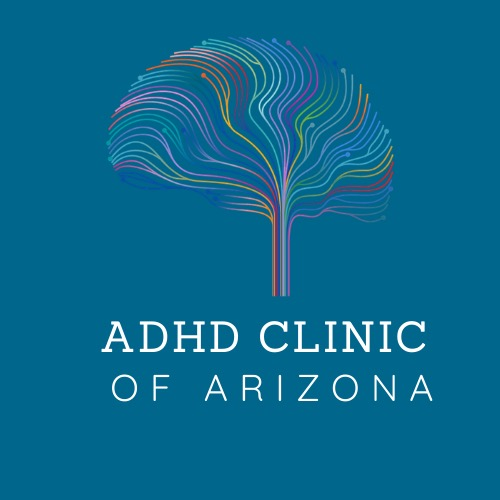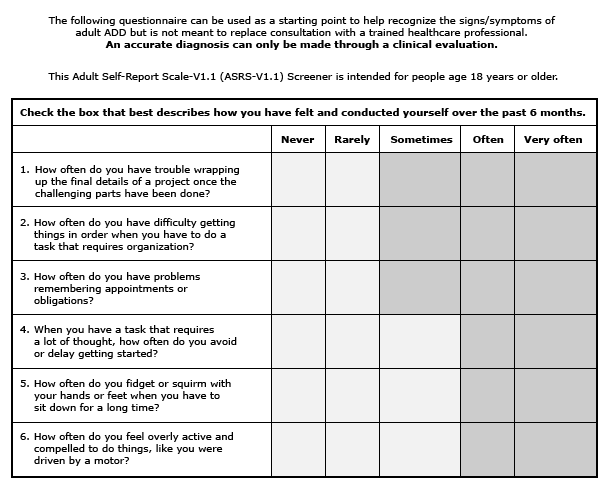What is an attention deficit disorder?
Attention deficit disorders, including ADD and ADHD, are syndromes which are considered both neurologic and psychiatric. People with these disorders have difficulty maintaining focus, completing tasks, having meaningful conversations. They may have problems in school, at work, or in social relationships.
Criteria for diagnosis is governed by the authoritative manual for neuropsychiatric diseases, the Diagnostic and Statistics Manual for Mental Disorders, commonly referred to as the DSM. Essentially, after the appropriate evaluation by an experienced healthcare professional, a patient must meet at least 12 various criteria related to inattention, hyperactivity, or impulsivity.
What is the difference between ADD and ADHD?
The major difference between these two disorders is the hyperactive component which is required for a diagnosis of ADHD. Patients with ADD typically may have hyperactivity, but not to a degree which is pervasive or interferes with daily life.
Who can be diagnosed with ADD or ADHD?
According to the American Academy of Pediatrics, children as young as age 4 can be diagnosed with attention deficit disorders. However, at our clinic, we do not treat children younger than age 6. DSM criteria requires those who are concerned they may have ADD or ADHD must have a history of symptoms prior to age 12. Adults can be diagnosed with ADD or ADHD, although disorders with hyperactive components are more common in adolescence.
What conditions are commonly mistaken for attention deficit disorders?
Other psychiatric conditions are commonly mistaken for ADD or ADHD including depression, anxiety, bipolar, schizophrenia and other mood disorders. Substance abuse can sometimes be a cause of symptoms similar to those with attention deficit disorders.
Less commonly, patients may experience symptoms of inattention or poor focus due to allergies, dietary problems, prior trauma, or neurologic disorders.
How are attention deficit disorders treated?
These disorders are treated in many ways, sometimes multiple methods are employed simultaneously. Most commonly, patients will undergo behavioral modification therapy and take prescription medication. Coping skill are taught and patients are encouraged to use them as much as possible.
Does treatment always require medication?
Treatment does not always require medication, although the majority of management plans do include medication. In pediatric setting in particular, medication is often delayed in favor of more conservative means of treatment.
Is there any upfront testing required before a diagnosis is made?
Patients are diagnosed by a series of tests, some are physical and others are assessments. It is important to confirm the diagnosis prior to establishing a treatment plan. To do this, other diagnoses need to be ruled out. You can expect to complete multiple questionnaires, physical and mental examinations, laboratory work. In some cases allergy testing, brain imaging, and other neurologic testing is required.
FAQs on the ADHD Test
QbTest is a FDA cleared computer based test that measures the core symptoms associated with ADHD including hyperactivity, impulsivity and inattention/distractibility. The test results are presented in a report that compares your results with a non-ADHD group of people of the same age and gender.
What is QbTest?
QbTest is a computer-based test that combines a test of attention ability with a movement analysis based on an infrared measurement system. Test results are assembled into a report and compared with norm data from other people of the same sex and age. This way you can see how you react when you concentrate on a task in comparison with people who do not have ADHD.
How should QbTest be used?
Assessing ADHD may be complicated and there is no single clinical tool that is able to give you all the answers. The QbTest provides objective data that together with other infor¬mation will help your clinician assess you for ADHD.
QbTest also provides a valuable baseline measurement that can help to evaluate any future changes in your activity, attention and impulsivity.
How is a QbTest performed?
The test is performed in front of a computer screen. The test equipment consists of an infrared camera, a head-band with an infrared marker attached to it and a responder button.
During the test a number of symbols are shown on the computer screen. The task is to push the responder button when a certain symbol appears on the screen. The test takes 15 minutes to complete and is not dependent on your language, reading or mathematic skills.
What do the results look like?
The QbTest reports below show the results from a seven year old boy with ADHD. The two graphs at the upper part of the reports show activity level and the third graph shows attention and impulsivity control. The green circles represent correct presses and the red squares represent incorrect presses. The vertical position of the symbols show the reaction time. At the bottom of the report all test results are summarized as numerical values.


